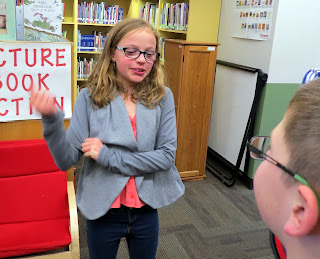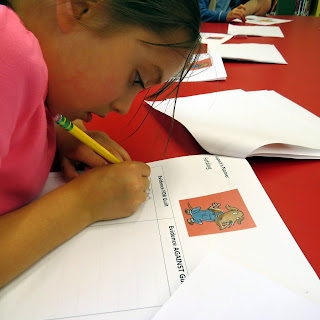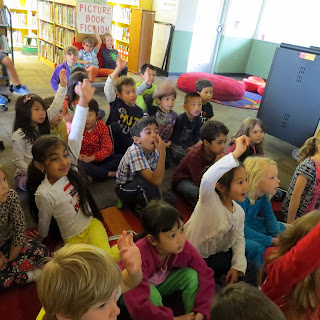I chose Simple English Wikipedia (SEW) because it serves young readers and English language learners so the expectations for the complexity of the work was more realistic for a group of 10- and 11-year-olds.
Working in their table groups, students compared the treatment of a single topic in regular and SEW and recorded their comments in a Venn diagram:
Next, they brainstormed the likely audiences for each version so they would have their readers in mind as they wrote. Working in pairs or individually, students selected topics that would help rectify the imbalances they had learned about.
Another aspect of this project was improving their research skills by requiring them to use the wonderful databases from the public library to gather information:
The final step was writing their articles in OneNote. Here is what part of one team's work looked like:
It was an interesting experience moving this unit to the OneNote environment! This change made it a lot easier for the students to collaborate in a meaningful and efficient way. I'm sure I can find ways to take this even further next year.
Want to see what they produced? Keep in mind that due to the nature of a wiki, what you read now has likely been edited by other users (which builds in another information literacy lesson for the students!) but I am delighted that this site that is accessed by millions worldwide is now broader and more inclusive.
- James "Duke" Aiona
- James Armistead
- Claudette Colvin
- Misty Copeland
- Evelyn Boyd Granville
- Madhur Jaffrey
- Daniel James, Jr.
- Sybil Ludington
- Wilma Mankiller
- Marissa Mayer
- I.M. Pei
- Molly Pitcher
- Raj Reddy
- Sonia Sotomayor
- Maria Tallchief
- Vivienne Tam
- Ahmed Zewail























